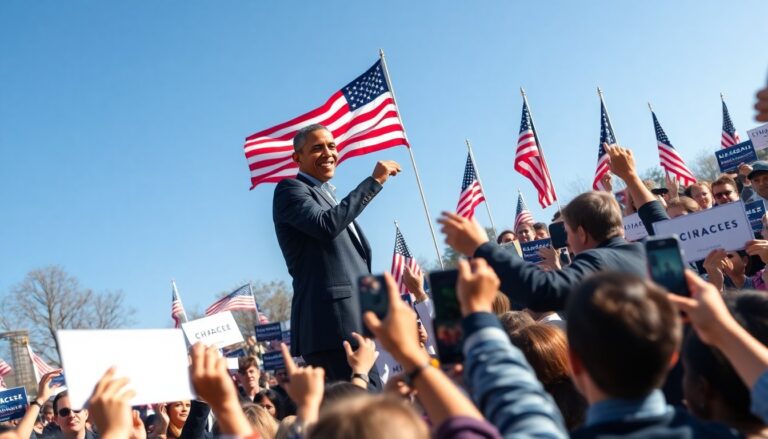Argomenti trattati
As the political landscape shifts, former President Barack Obama has taken center stage, urging voters in Virginia and New Jersey to support Democratic candidates in upcoming gubernatorial elections. With less than a year remaining until the midterm elections, these contests serve as a critical litmus test for the Democratic Party’s standing against the backdrop of a tumultuous political environment shaped by the Trump presidency.
Obama’s strategic campaigning
During his campaign visits, Obama has consistently framed the elections as a pivotal moment for voters to take a stand against what he describes as the current administration’s recklessness. The former president extolled the virtues of candidates Abigail Spanberger in Virginia and Mikie Sherrill in New Jersey, emphasizing their capability to enhance the economic well-being of constituents. By contrasting their experience with the chaos of the Trump era, Obama aimed to galvanize support for the Democratic cause.
Addressing economic concerns
Central to Obama’s message is a focus on economic issues that resonate with everyday voters. He highlighted the struggles faced by families due to rising costs and inflation, asking pointedly whether their situations have improved under current leadership. By steering the conversation towards tangible economic concerns, Obama sought to engage voters who may feel disillusioned by political rhetoric and instead emphasize the real-life implications of their choices at the ballot box.
In various speeches, Obama criticized the Republican candidates’ lack of engagement with pressing economic challenges, arguing that their approach risks overlooking the needs of the electorate. The former president’s rallying cry for voters to reject candidates aligned with Trump’s autocratic tendencies was particularly striking, as he called for a unified stand to restore democratic values.
The political landscape and its implications
The gubernatorial races in Virginia and New Jersey are not merely local contests; they reflect broader national issues that could influence the Democratic Party’s future. Both Spanberger and Sherrill have tailored their campaigns to resonate with moderate voters, focusing on local policies rather than national controversies. This strategy aligns with a growing sentiment among Democratic operatives who believe that centrist approaches may yield better results in the current political climate.
Moderation vs. bold promises
While progressive voices within the party advocate for more ambitious policy proposals, candidates like Spanberger have adopted a more measured tone, advising against making promises that could prove unachievable. This pragmatic stance is intended to appeal to a diverse voter base that seeks stability over drastic change. Spanberger’s comments serve as a cautionary note to Democratic leaders who may be tempted to adopt bold, untested initiatives.
As the election approaches, the landscape remains fraught with challenges. Republican candidates, such as Winsome Earle-Sears in Virginia and Jack Ciattarelli in New Jersey, have attempted to localize their campaigns by focusing on state-specific issues while subtly invoking Trump’s influence. However, the contrast between their approaches and the Democratic emphasis on economic stability may shape voters’ perceptions.
Voter sentiment and the future
The campaigns have ignited discussions about the direction of the Democratic Party. While some voters express enthusiasm for progressive candidates like Zohran Mamdani in New York, others advocate for a more centrist approach, hoping it will lead to victories in key races. This divergence reflects a broader debate within the party regarding its identity and strategy moving forward.
Obama’s rallying of support for Spanberger and Sherrill highlights the importance of economic issues and the need for Democratic candidates to connect with voters on a personal level. As these races unfold, they will undoubtedly provide insights into the electorate’s priorities and the future trajectory of the Democratic Party.

